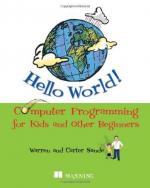|
This section contains 1,105 words (approx. 4 pages at 300 words per page) |

|
There are two basic data transfer and communication systems in computing technology—digital and analog. Analog systems have continuous input and output of data, while digital systems manipulate information in discrete chunks. Although digital devices can use any numeric system to manipulate data, they currently only use the binary number system, consisting of ones and zeros. Information of all types, including characters and decimal numbers, are encoded in the binary number system before being processed by digital devices. In mixed systems, where sensors may deliver information to a digital computer in analog form, such as a voltage, the data have to be transformed from an analog to digital representation (usually binary also).
The chief difference between digital and analog devices is related to accuracy and speed. Since encoding is generally necessary for digital systems, it is not possible to exactly represent things like data...
|
This section contains 1,105 words (approx. 4 pages at 300 words per page) |

|



